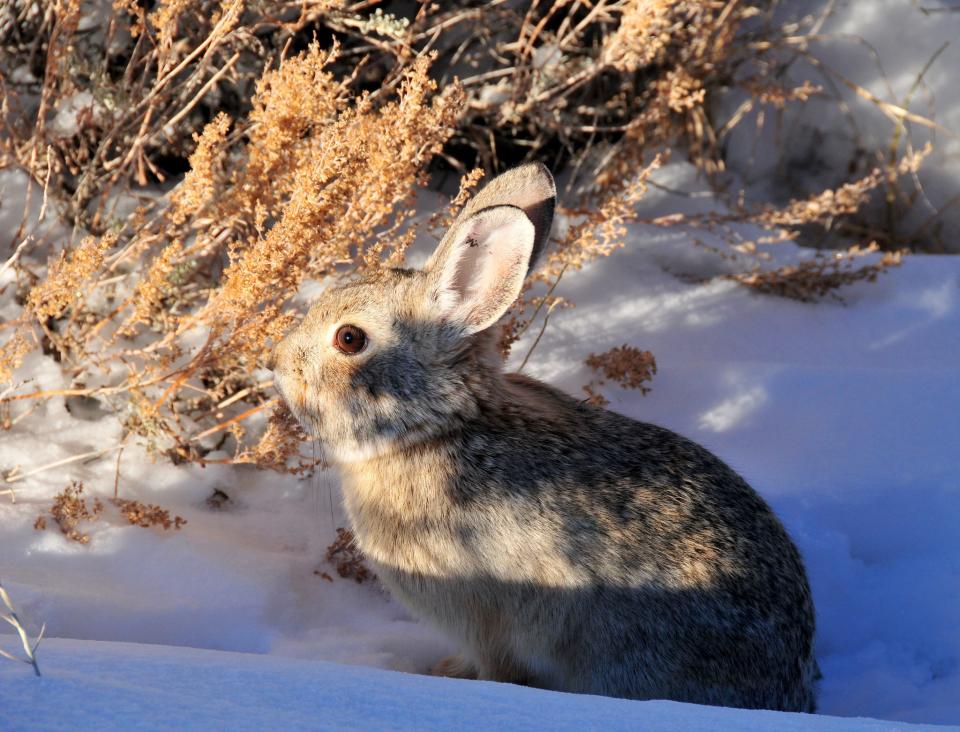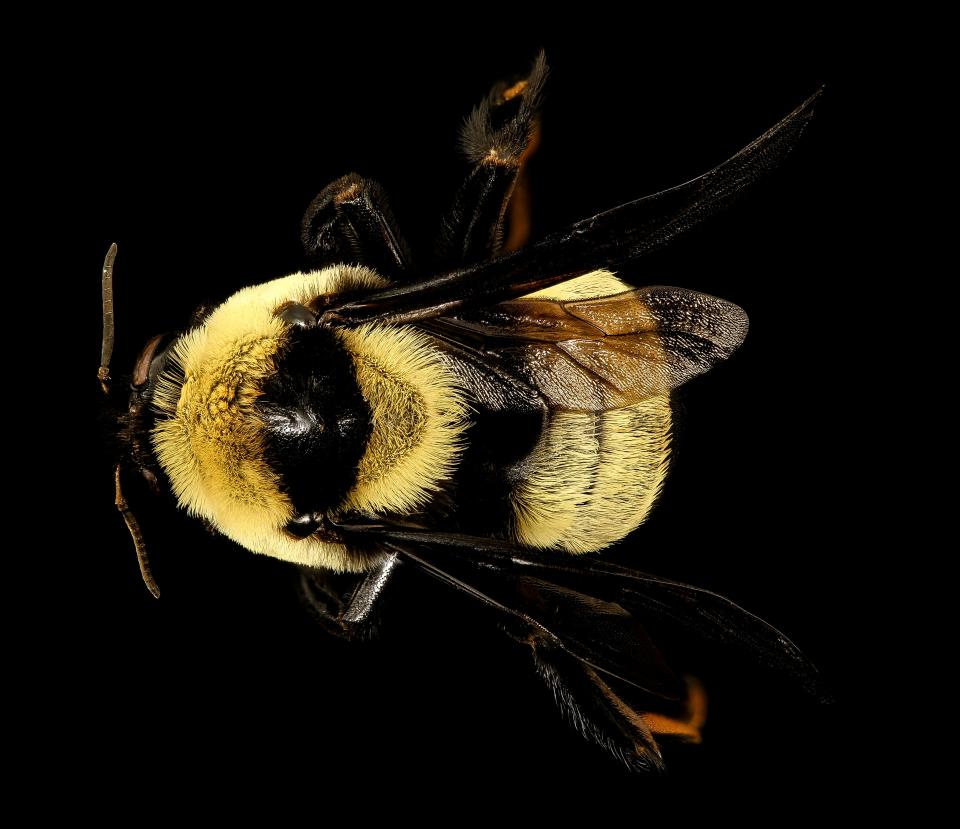Southern Plains bumble bee, found in Florida, could soon become an endangered species
The U.S. Fish and Wildlife is considering adding nine new species to the endangered species list, including the Southern Plains bumble bee, which calls the pine savannas of Florida home.
The agency completed its 90-day findings on petitions to list 10 species under the Endangered Species Act and found that all but one warranted further status reviews.
The eastern hellbender, a large aquatic salamander found in cool, permanent streams across 15 states, was lucky enough to be dropped from consideration. However, the Missouri distinct population of eastern hellbender was listed as endangered by the agency in 2021.
Rice's whale: Gulf of Mexico's Rice's whale is a newcomer to Endangered Species Act protections
Here’s a look at the other animals on the list.
Betta hendra
The U.S. Fish and Wildlife calls the betta hendra a colorful freshwater fish endemic to the peat swamp forests of Central Kalimantan, Indonesian Borneo.
During its review of the petition to list betta hendra as endangered, the agency found that overutilization for commercial and recreational purposes and climate change may present threats to the species.
Betta rutilans
Betta Rutilans is a red-colored freshwater fish endemic to the peat swamp forests of West Kalimantan, Indonesian Borneo, according to the agency.
Information submitted to the U.S. Fish and Wildlife showed credible claims of habitat loss and degradation. The agency also found that overutilization for commercial and recreational purposes and climate change produced similar threats to betta rutilans.
Hickory Nut Gorge green salamander
The Hickory Nut Gorge green salamander is an amphibian with a dark body and bright green to yellow patches on its back. It is found in the hardwood and cove forests in Hickory Nut Gorge in western North Carolina and was first described as a unique species in 2019.
The agency found several credible claims that threaten the species, including recreation, roads, logging, hemlock loss, invasive plant species, overutilization, disease, climate change, pollution, severe weather, catastrophic events and the effects of small, isolated populations.
Pygmy rabbit

The pygmy rabbit is a small rabbit that lives in a sagebrush habitat. It is found in the Great Basin and adjacent intermountain areas of the western United States, from southeastern Oregon and southern Idaho to southwestern Montana and south-central Wyoming to northwestern Colorado and southwestern Utah, central Nevada, and eastern California.
The Columbia basin population of pygmy rabbits has been enlisted as endangered since 2003. The service has now found that the compound effects of fire, cheatgrass and climate change have potentially ameliorated or exacerbated by any existing regulatory mechanisms or conservation efforts. Evidence presented in the petition also suggests grazing, oil and gas development and disease may be threats to the pygmy rabbit.
Railroad Valley toad
One of the smallest of the western toad species with a long head and limbs and dark brown spots, the Railroad Valley toad lives only in the spring-fed wetlands in the Lockes Wildlife Management Area in Nye County, Nevada.
U.S. Fish and Wildlife says that oil and gas extraction via hydraulic fracturing and lithium production provide credible reasons to warrant further review. Petitioners also presented information suggesting livestock grazing, infrastructure, mining, disease, nonnative vegetation, climate change and stochastic events may be threats to the Railroad Valley toad.
Southern Plains bumble bee

The Southern Plains bumble bee is a large black and yellow bumble bee identified by its short hair, short head and typically yellow coloring between the head and thorax, between the wings. The species inhabits open prairies, meadows and grasslands of the Midwest, mid-Atlantic states, and the Plains states from Texas to North Dakota, as well as to the grasslands and pine savannas of Florida and the southeast.
The service said agricultural practices and pesticide use presented credible claims for further study. Petitioners also suggest that nonnative invasive species encroachment, grazing, honey bees, changes to fire regimes, disease, inadequacy of existing regulatory mechanisms, climate change and the effects of small populations may be threats to the Southern Plains bumble bee.
Southwest spring firefly
The southwest spring firefly is a terrestrial invertebrate native to Arizona and associated with riparian and wetland habitats. Primary threats to fireflies include potential habitat destruction from alteration or loss of ground and surface water flows, livestock grazing, mining, effects from climate change, and light pollution.
Loss and degradation of wetland habitats, livestock grazing, mining, climate change and light pollution were factors the U.S. Fish and Wildlife considered, leading the agency to study the species further.
White-margined penstemon
The white-margined penstemon is a rare perennial plant restricted to the Mojave Desert, with four disjunct populations in southeastern California, southern Nevada, and northwestern Arizona. It is 15-35 cm tall, with smooth stems and pink to purple petals.
Habitat loss and degradation due to land development and off-highway vehicle use and effects of climate change were factors that played into the agency’s decision. Petitioners also suggest that cattle grazing, insect and mammalian predation, invasive plant species and pollinator limitation may be threats to the white-margined penstemon.
Yellow-spotted woodland salamander
The yellow-spotted woodland salamander is a large, slender salamander with a gray-brown body and two rows of yellow spots along its back. It inhabits steep shale and sandstone outcroppings along the Appalachian Plateau in Kentucky, Tennessee, Virginia and West Virginia.
Mining operations, land clearing and climate change played roles in the agency’s decision. Petitions suggest that collection, predation, disease, invasive species, pollution, and recreation may be threats to the yellow-spotted woodland salamander.
This article originally appeared on Pensacola News Journal: Endangered species list sees 9 more added by U.S. Fish and Wildlife

